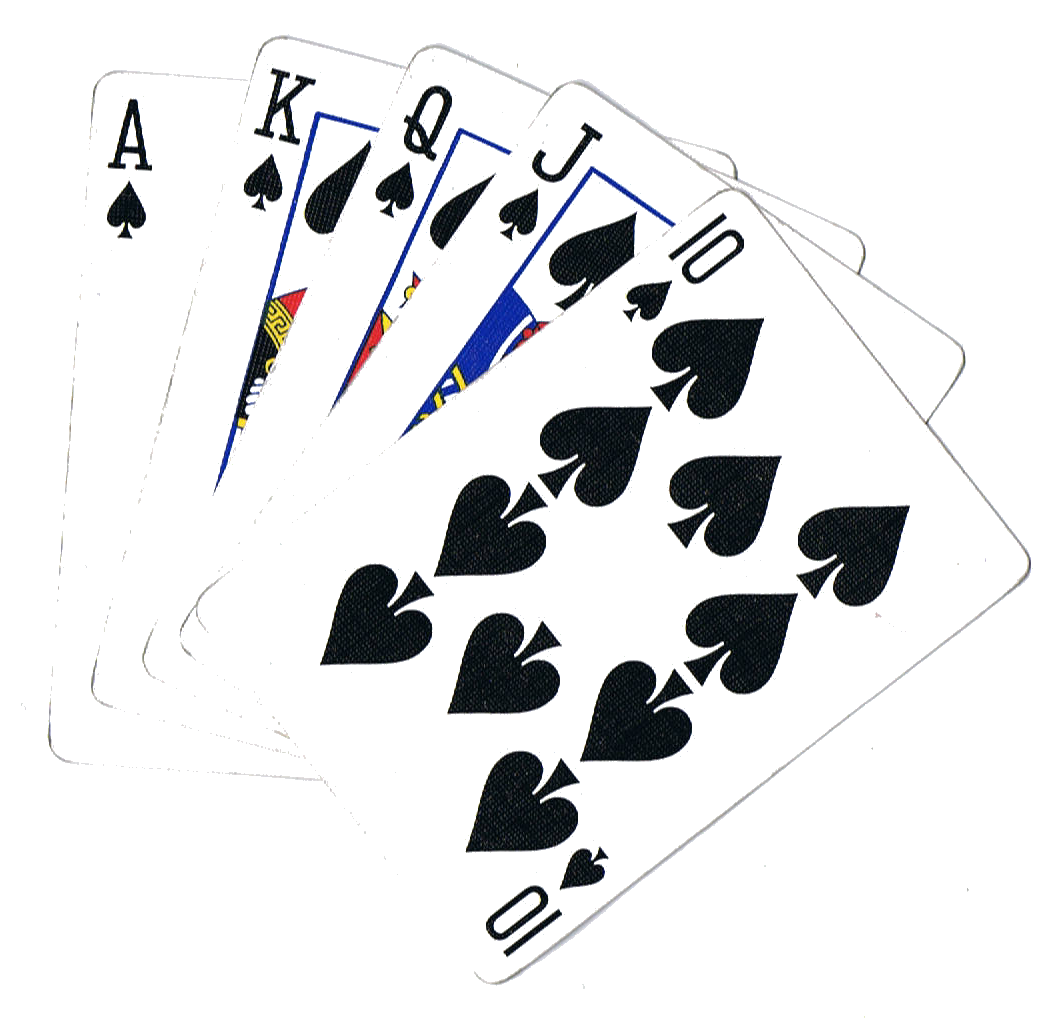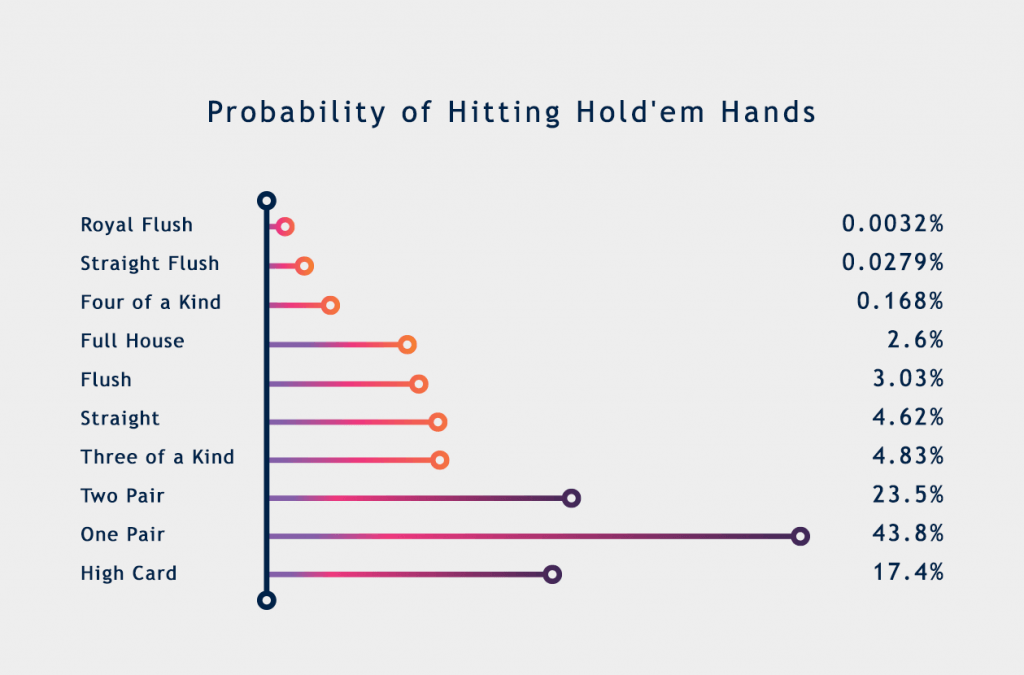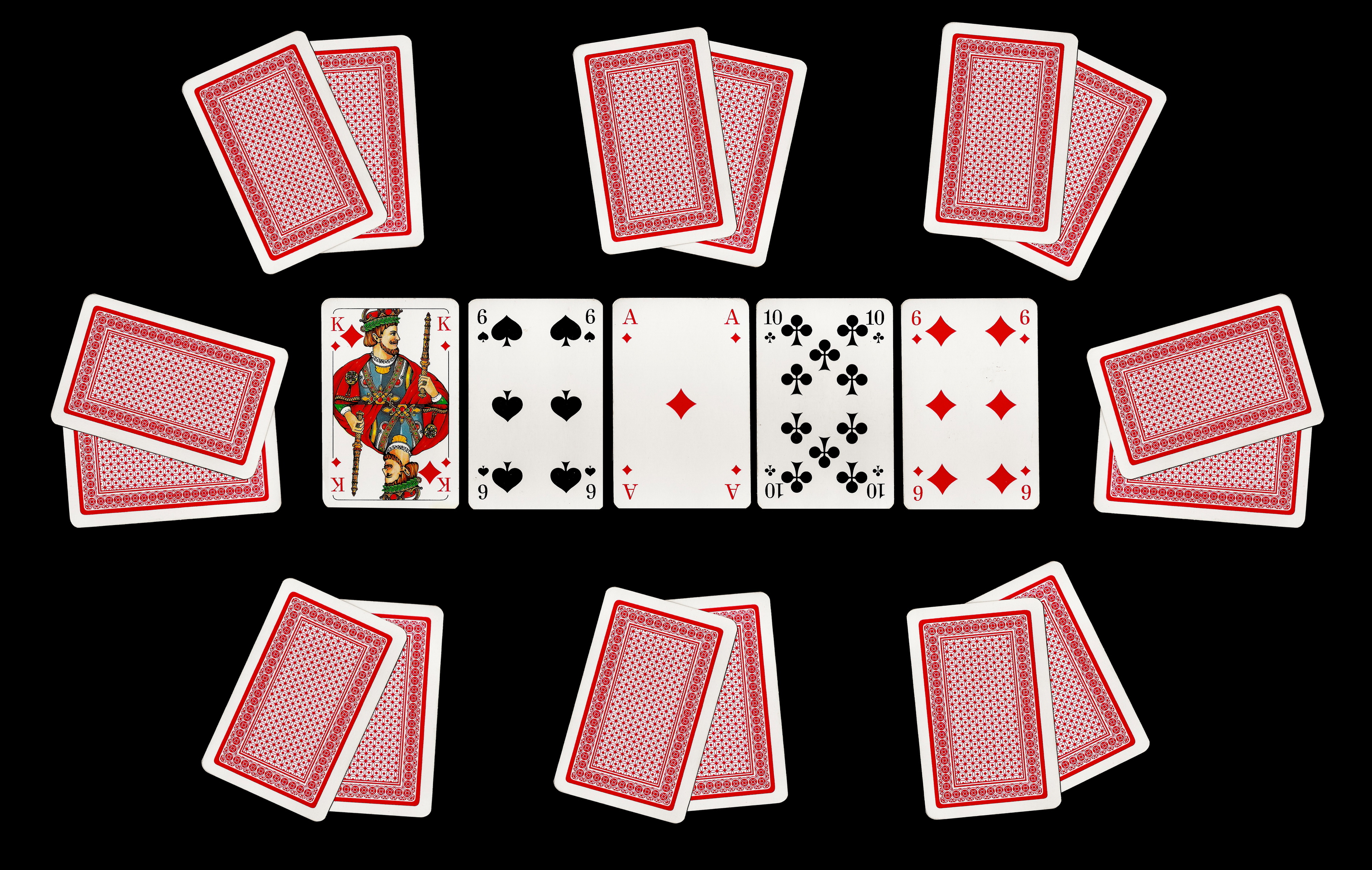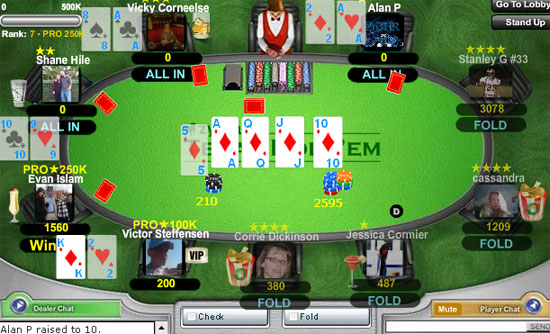What Is A Flush In Poker Texas Holdem
Nov 23, 2018 A flush is a five-card hand where all cards are all of the same suit. The strength of a flush is determined by its highest card. If two players both have a flush with the same high card, the second highest card is checked (and so on). In the majority of poker formats, a flush beats a straight, but loses to a full house. Playing Flush and Straight Draws. Mathematics: Flushes & Straights: Simple Pot Odds: Implied Odds: Reverse Implied Odds. Watch SplitSuit's video on Flushes and Flush Draws for 8 hand histories involving strategy on playing flushes in Texas Hold'em. You are on the flop with a pretty decent flush draw. Flush A Flush is a poker hand made out of five cards, all of which have the same symbol or suit. They are one of the mid-range poker hands as far as strength goes but it can still win a nice pot.
In poker, the nut hand is the strongest possible hand in a given situation. The second-nut hand or third-nut hand (and so on) may refer to the second and third best possible hands. The term applies mostly to community card poker games where the individual holding the strongest possible hand, with the given board of community cards, is capable of knowing that they have the nut hand.
Usage in context[edit]
In Texas hold 'em, if the board is 5♠ 6♠ A♣ 9♠ 5♥, a player holding 7♠ 8♠ has the nut hand because those hole cards complete a 9-high straight flush of spades, which cannot be beaten by any other possible combination of hole cards and community cards. On the same board, the hand 5♣ 5♦ would be the second-nut hand, four of a kind fives; the third-nut hand would be any pair of the remaining three aces, making a full house, aces full of fives.
It is important to note that the actual nut hand may not be the same as the absolute nut hand; for example, if the board is 7♥ 2♣ K♠ K♥ 3♦ a player with K♣ K♦ has the absolute nut hand. However, any player with K-7 knows that he has the nut hand as it is impossible for another player to have two kings. The phrase may also refer to a hand in progress with cards yet to be dealt, as the player can be said to have the nuts at that time. For example, if a player holds 7♠ 8♠ on a board of 5♣ 6♠ 9♥ he can be said to have the nuts, however if the next card comes 7♥ then 8-10 becomes the nuts. This makes some nut hands very vulnerable in nine-card games, such as Omaha hold 'em.
In high-low split games one often speaks of 'nut-low' and 'nut-high' hands separately. In Omaha hold 'em, if the board is, 5♠ 6♠ A♣ 9♠ 5♥, any player with 2-3 makes the nut-low hand, 6-5-3-2-A, while a player with 2-4 makes the second-nut-low hand, 6-5-4-2-A (the nut-high hands remain the same as in Texas hold 'em, in this case 7♠ 8♠ to make a straight flush, although one can go as low as aces full by introducing quads and straight flush blockers). Similarly, one can sometimes hear the term 'nut-nut', which refers to a hand that makes both the best possible high and low. In Omaha, with the same board as above, a player holding 7♠ 8♠ plus 2-3 of any suit has the nut-nut and is guaranteed no worse than a split of the low pot plus a win of the high pot.
Origins[edit]
A common and certainly apocryphal folk etymology is that the term originated from the historical poker games in the colonial west of America, where if a player bet everything he possessed, he would place the nuts of his wagon wheels on the table to ensure that, should he lose, he would be unable to flee and would have to make good on the bet. Since it would be expected that a player would only make such a bet when he had the best possible hand, the folk lore says that this is how the best possible hand came to be known as the nuts. It is also rumored[by whom?] that these historical games were played only in the winter, and therefore, the nuts that were placed on the table were 'stone cold', hence coining the term 'stone-cold-nuts'.[1]
Another explanation[citation needed] is that 'the nuts' originated from the old English usage of 'nuts', meaning 'any source of pleasure'.[2]
Another seemingly fitting explanation is that the term was derived from the UK English slang 'the dog's bollocks' or 'the mutt's nuts', meaning 'the absolute best'. However, this phrase originated around 1949,[3] and the term 'the nuts' pre-dates it.[citation needed]
See also[edit]
References[edit]
- ^DD Poker Glossary
- ^Etymology Dictionary's entry for 'nuts'
- ^The Phrase Finder's entry for 'dog's bollocks'
What Is A Flush In Poker Texas Holdem M Online
Mathematics: Flushes & Straights : Simple Pot Odds : Implied Odds : Reverse Implied Odds
Watch SplitSuit's video on Flushes and Flush Draws for 8 hand histories involving strategy on playing flushes in Texas Hold'em.
You are on the flop with a pretty decent flush draw. You have two hearts in your hand and there are another two on the flop.
Unfortunately, some cool cat has made a bet, putting you in a tricky situation where you have to decide whether or not it is in your best interest to call to try and make the flush, or fold and save your money.
This is a prime example of where you are going to take advantage of 'pot odds' to work out whether or not it is worth making the call.
What are pot odds? What about flushes and straights?
Basically, just forget about the name if you haven't heard about it before, there's no need to let it throw you off. Just think of 'pot odds' as the method for finding out whether chasing after a draw (like a flush or straight) is going to be profitable. If you're on your toes, you might have already been able to guess that it is generally better to chase after a draw when the bet is small rather than large, but we'll get to that in a minute...
Pot odds will tell you whether or not to call certain sized bets to try and complete your flush or straight draw.
Why use pot odds?

Because it makes you money, of course.
If you always know whether the best option is to fold or call when you're stuck with a hand like a flush draw, you are going to be saving (and winning) yourself money in the long run. On top of that, pot odds are pretty simple to work out when you get the hang of it, so it will only take a split second to work out if you should call or fold the next time you're in a sticky drawing situation. How nice is that?
How to work out whether or not to call with a flush or straight draw.
Now, this is the meat of the article. But trust me on this one, the 'working-out' part is not as difficult as you might think, so give me a chance to explain it to you before you decide to knock it on the head. So here we go...
Essentially, there are two quick and easy parts to working out pot odds. The first is to work out how likely it is that you will make your flush or straight (or whatever the hell you are chasing after), and the second is to compare the size of the bet that you are facing with the size of the pot. Then we use a little bit of mathematical magic to figure out if we should make the call.
1] Find out how likely it is to complete your draw (e.g. completing a flush draw).
All we have to do for this part is work out how many cards we have not seen, and then figure out how many of these unknown cards could make our draw and how many could not.
We can then put these numbers together to get a pretty useful ratio. So, for example, if we have a diamond flush draw on the flop we can work out...

The maths.
There are 47 cards that we do not know about (52 minus the 2 cards we have and minus the 3 cards on the flop).
- 9 of these unknown cards could complete our flush (13 diamonds in total minus 2 diamonds in our hand and the 2 diamonds on the flop).
- The other 38 cards will not complete our flush (47 unknown cards, minus the helpful 9 cards results in 38 useless ones).
- This gives us a ratio of 38:9, or scaled down... roughly 4:1.

So, at the end of all that nonsense we came out with a ratio of 4:1. This result is a pretty cool ratio, as it tells us that for every 4 times we get a useless card and miss our draw, 1 time will we get a useful card (a diamond) and complete our flush. Now all we need to do is put this figure to good use by comparing it to a similar ratio regarding the size of the bet that we are facing.
After you get your head around working out how many cards will help you and how many won't, the only tricky part is shortening a ratio like 38:9 down to something more manageable like 4:1. However, after you get used to pot odds you will just remember that things like flush draws are around 4:1 odds. To be honest, you won't even need to do this step the majority of the time, because there are very few ratios that you need to remember, so you can pick them off the top of your head and move on to step 2.
2] Compare the size of the bet to the size of the pot.
The title pretty much says it all here. Use your skills from the last step to work out a ratio for the size of the bet in comparison to the size of the pot. Just put the total pot size (our opponent's bet + the original pot) first in the ratio, and the bet size second. Here are a few quick examples for you...
- $20 bet into a $100 pot = 120:20 = 6:1
- $0.25 bet creating a total pot size of $1 = 1:0.25 = 4:1
- $40 bet creating a total pot size of $100 = 100:40 = 2.5:1
That should be enough to give you an idea of how to do the second step. In the interest of this example, I am going to say that our opponent (with a $200 stack) has bet $20 in to a $80 pot, giving us odds of 5:1 ($100:$20). This is going to come in very handy in the next step.
This odds calculation step is very simple, and the only tricky part is getting the big ratios down into more manageable ones. However, this gets a lot easier after a bit of practice, so there's no need to give up just yet if you're not fluent when it comes to working with ratios after the first 5 seconds. Give yourself a chance!
To speed up your pot odds calculations during play, try using the handy (and free) SPOC program.
3] Compare these two ratios.
What Is A Flush In Poker Texas Holdem Card Game
Now then, we know how likely it is that we are going to complete our draw, and we have worked out our odds from the pot (pot odds, get it? It's just like magic I know.). All we have to do now is put these two ratios side to side and compare them...
- 5:1 pot odds
- 4:1 odds of completing our draw on the next card
The pot odds in this case are bigger than the odds of completing our draw, which means that we will be making more money in the long run for every time we hit according to these odds. Therefore we should CALL because we will win enough to make up for the times that we miss and lose our money.
If that doesn't make total sense, then just stick to these hard and fast rules if it makes things easier:
If your pot odds are bigger than your chances of hitting - CALL
If your pot odds are smaller than your chances of hitting - FOLD
So just think of bigger being better when it comes to pot odds. Furthermore, if you can remember back to the start of the article when we had the idea that calling smaller bets is better, you will be able to work out that small bets give you bigger pot odds - makes sense right? It really comes together quite beautifully after you get your head around it.
What if there are two cards to come?
In this article I have shown you how to work out pot odds for the next card only. However, when you are on the flop there are actually 2 cards to come, so shouldn't you work out the odds for improving to make the best hand over the next 2 cards instead of 1?
No, actually.
Even if there are 2 cards to come (i.e. you're on the flop), you should still only work out the odds of improving your hand for the next card only.
The reason for this is that if you work using odds for improving over two cards, you need to assume that you won't be paying any more money on the turn to see the river. Seeing as you cannot be sure of this (it's quite unlikely in most cases), you should work out your pot odds for the turn and river individually. This will save you from paying more money than you should to complete your draw.
I discuss this important principle in a little more detail on my page about the rule of 2 and 4 for pot odds. It's also one of the mistakes poker players make when using odds.
Note: The only time you use odds for 2 cards to come combined is when your opponent in all-in on the flop. In almost every other case, you take it one card at a time.
Playing flush and straight draws overview.
I really tried hard to keep this article as short as possible, but then again I didn't want to make it vague and hazy so that you had no idea about what was going on. I'm hoping that after your first read-through that you will have a rough idea about how to work out when you should call or fold when on a flush or straight draw, but I am sure that it will take you another look over or two before it really starts to sink in. So I advise that you read over it again at least once.
The best way to get to grips with pot odds is to actually start working them out for yourself and trying them out in an actual game. It is all well and good reading about it and thinking that you know how to use them, but the true knowledge of pot odds comes from getting your hands dirty and putting your mind to work at the poker tables.
It honestly isn't that tough to use pot odds in your game, as it will take less than a session or two before you can use them comfortably during play. So trust me on this one, it is going to be well worth your while to spend a little time learning how to use pot odds, in return for always knowing whether to call or fold when you are on a draw. It will take a load off your mind and put more money in your pocket.
What Is A Flush In Poker Texas Holdem Games
To help you out when it comes to your calculations, take a look at the article on simple pot odds. It should make it all a lot less daunting.
Go back to the sublime Texas Hold'em guide.

Poker Hand Rankings
Can You Afford Not To Use
Poker Tracker 4?
“I wouldn’t play another session of online poker without it”
Royal Flush In Poker
“I play $25NL, and in under 1 week PT4 had paid for itself”
What Is A Flush In Poker Texas Holdem Old Em Download
Comments